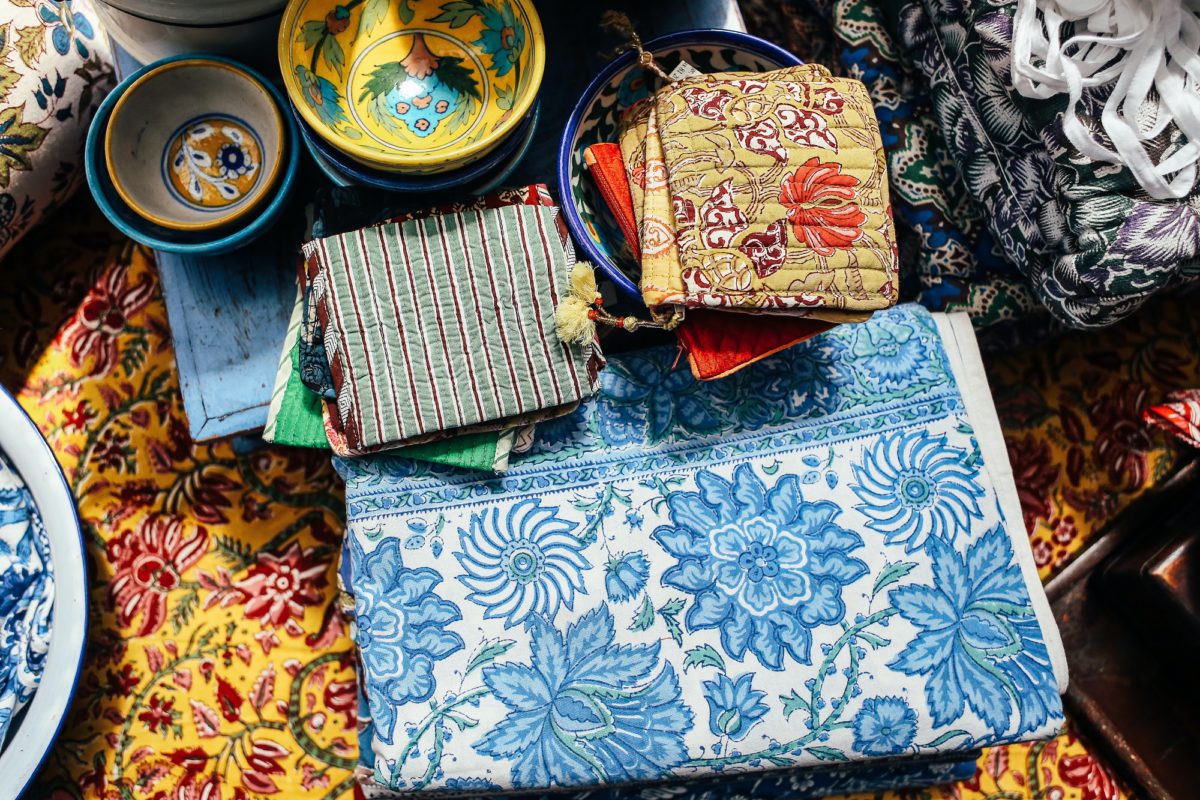Is Deadstock the New Green in Sustainable Fashion?
Every year, 92 million tonnes of fabric end up in landfills or are burnt. Simply put, imagine a rubbish truck full of clothes being dumped every second.[1] The main reason: deadstock.

Deadstock, what exactly are we talking about?
In fashion, deadstock means a surplus of fabric and products that remain unused or unsold. The first, deadstock fabric surplus, means an excess from textile mills that go unused to make apparel. The latter, although more arbitrary, refers to finished goods surplus, which includes branded clothes and accessories that remain unsold.[2]
Over the past two decades, deadstock has seen a considerable increase,[3] reaching USD $120 billion in value today.[4] If the excess materials are not re-made into something else, they lay stagnant in warehouses, get shipped to incineration sites, or are dumped in landfills.
How Stock Dies, and Pollutes
The primary reason behind all this excess is overproduction due to unsustainable fast fashion models and highly unpredictable supply chains.[5]
Today’s retailers are incentivized by speed to market, moving products from cutting rooms to store racks in just days. Such short deadlines can lead to incorrect marketing forecasts and poor inventory planning.[6] This is then further aggravated by volatile environments, such as wars, pandemics, and economic instability – all leading to a growing heap of stockpiles around the world.[7]

A Greener Alternative
But the good news is that there’s an emerging movement towards circular models that see waste as a supply source. They are flocking to deadstock, buying offcuts and excess fabric from fashion houses and production mills, to either repurpose them or create something new. This shift could help alleviate the industry’s hefty footprint. According to a McKinsey report, embracing circularity in fashion could deliver an estimated 143 million tonnes of GHG emissions savings by 2030.[8]
Creativity in Action
Brands are quickly catching wind of this opportunity.[9] Eco labels, like Anekdot, transform leftover scraps into functional pieces. While Christy Dawn designs limited collections with rescued and revitalized fabric that would otherwise be thrown away.
Although not a panacea to fashion’s overproduction conundrum, diverting deadstock from becoming waste is one crucial piece to a very complex problem.
References
[1] “10 Stunning Fast Fashion Waste Statistics,” Earth.org. Available at: https://earth.org/statistics-about-fast-fashion-waste/#:~:text=92%20Million%20Tonnes%20of%20Textiles,on%20landfill%20sites%20every%20second.
[2] “Deadstock Fabric.” Core Fabrics. Available at: https://corefabricstore.com/collections/deadstock-designer?usf_sort=-date, and Abby Jenkins. “What Is Deadstock? Why It’s Bad & How to Avoid.” Oracle Netsuite. Available at: https://www.netsuite.com/portal/resource/articles/inventory-management/dead-stock.shtml
[3] “Circular business models in the fashion industry – new study identifies USD 700 billion opportunity, “ Ellen MacArthur Foundation. Available at: https://ellenmacarthurfoundation.org/news/circular-business-models-in-the-fashion-industry
[4] “Why designers are using deadstock and leftover fabrics now more than ever before,” Vogue.in. Available at: https://www.vogue.in/fashion/content/why-designers-are-using-deadstock-and-leftover-fabrics-more-than-ever-before
[5] “Putting the brakes on fast fashion,” UN environment programme. Available at: https://www.unep.org/news-and-stories/story/putting-brakes-fast-fashion
[6] “Waste of Overproduction; causes, symptoms, examples and solutions.” Available at: https://leanmanufacturingtools.org/114/waste-of-overproduction-causes-symptoms-examples-and-solutions/
[7] “The Fashion Industry Waste Is Drastically Contributing to Climate Change,” pirg.org. Available at: https://pirg.org/california/articles/the-fashion-industry-waste-is-drastically-contributing-to-climate-change/
[8] “Fashion on Climate: How the fashion industry can urgently act to reduce its greenhouse gas emissions.” McKinsey. Available at: https://www.mckinsey.com/~/media/mckinsey/industries/retail/our%20insights/fashion%20on%20climate/fashion-on-climate-full-report.pdf
[9] “Circular business models in the fashion industry – new study identifies USD 700 billion opportunity.“ Ellen MacArthur Foundation. Available at: https://ellenmacarthurfoundation.org/news/circular-business-models-in-the-fashion-industry
Authors: Naomy Gmyrek & Giuseppe Scandariato
Latest from the Blog